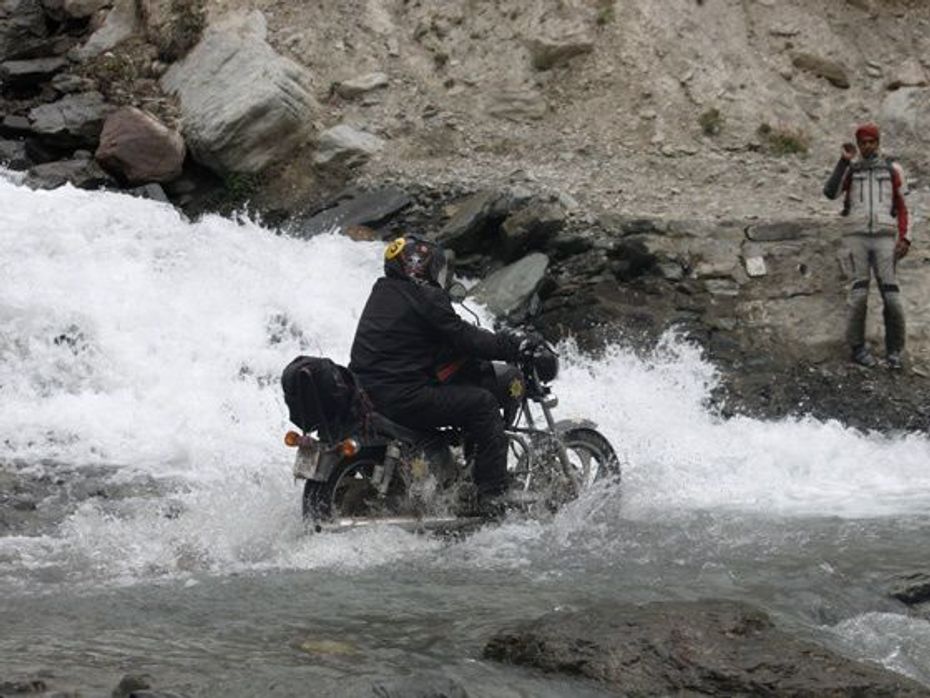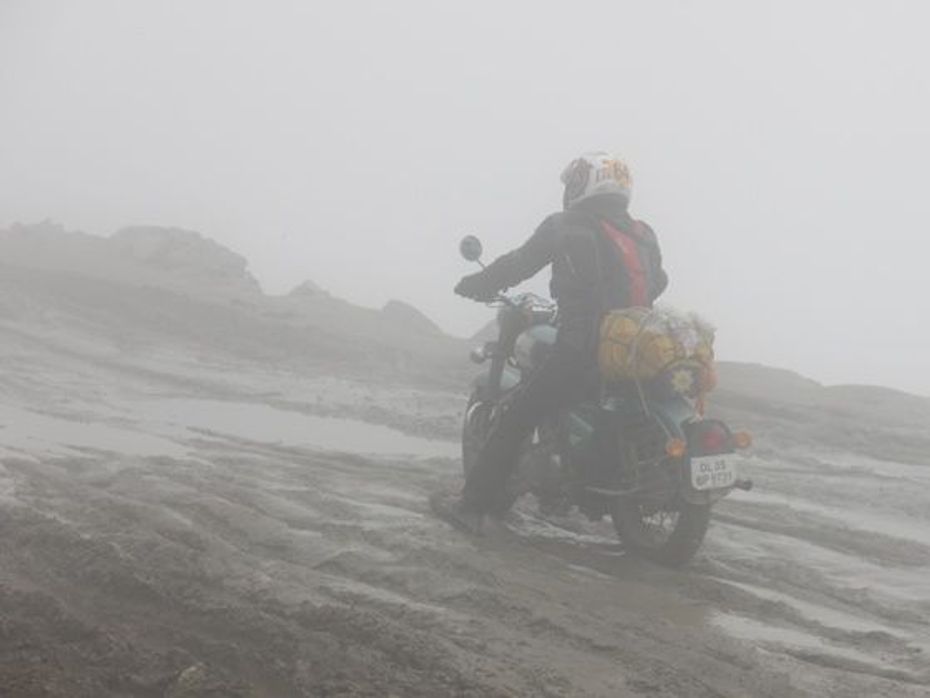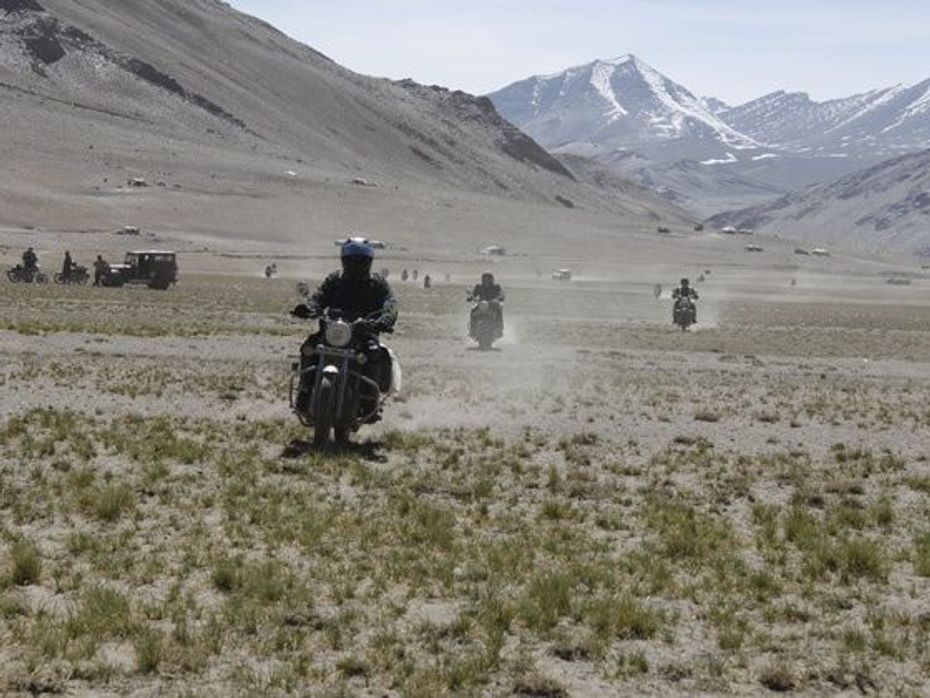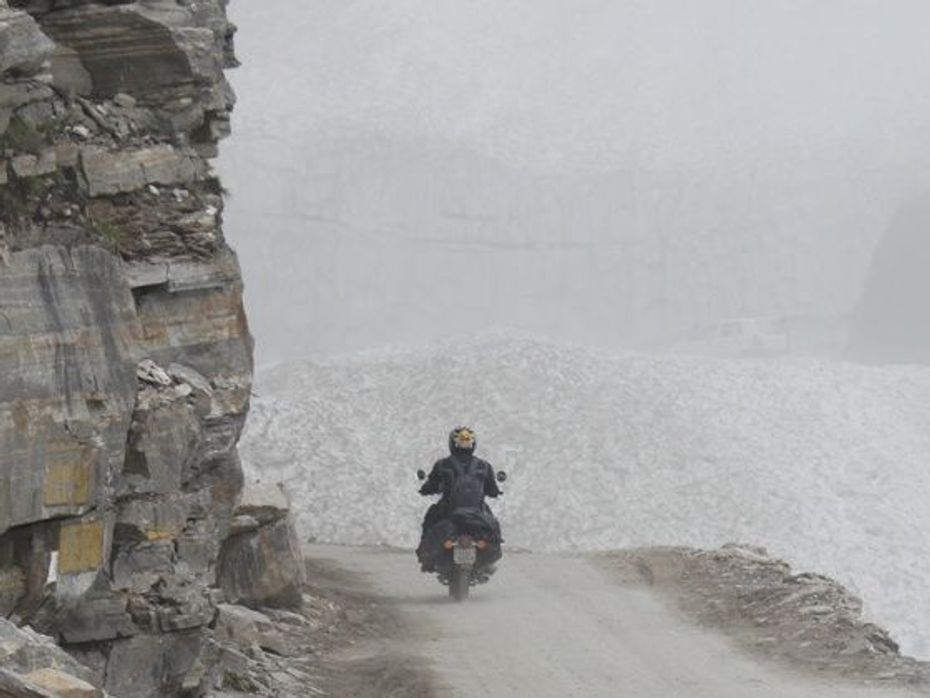
EXCLUSIVE: 2024 Bajaj Pulsar 150 Launched, Know Onroad Price, New...
- Apr 9, 2024
- Views : 5517

One of the primary reasons why riding to the Himalayas has gained massive popularity in the past decade is that it tests not just your physical endurance; it also tests your riding skill to the limit. Gravel, slush, snow, rain are just some of the hurdles you come across during the ride.
Gravel: Landslides in the hilly areas leave a lot of gravel on the road which makes riding through it very tricky. And riding through gravel is nothing like riding on asphalt or concrete. For a smooth ride through gravel you need to work extra hard to maintain traction at all times in order to have complete control of the bike. For this, moderated throttle control is important. Pulling the clutch too often is also a pretty bad idea, especially while rolling downhill or braking, as without the engine driving the rear wheel of the bike, stability is thoroughly compromised. The ideal way to ride is to shift to an appropriate gear, and gently throttle your way out of gravel patches. Obviously there will be some wobbling and shaking of the front wheel. The key is to keep a relaxed grip on the handlebars if the front wheel wobbles and maintain a consistent throttle input. Braking hard in the gravel can make you bike slide out of control. So if you need to slow down, a combination of rear brakes and engine braking works the best. Avoid grabbing the front brake suddenly and be gentle with your inputs.

Water crossings: On your ride through the Himalayas, you will encounter numerous streams which flow across the road. The water is fast flowing and frothy which makes it difficult to see what lies beneath and in most likelihood it is laden with stones. Visually gauge which is the shallowest path to the other side and gradually find your way through it. Like gravel, keep a relaxed grip on the handle and let the front find its way. Do not use the clutch as far as possible; a lot of riders try to cross using half-clutch which can easily lead to burnt clutch plates. If you get stuck in the water due to a stone, try rocking your bike back and forth and throttle your way out of it. Try to keep the engine running even if your bike gets stuck. And if it does get stuck, push it out under engine power. If it stalls after ingesting water though, don’t try and start it there. Get your buddies to help you push it out and restart the engine after it has had a few minutes to dry out.
Slush: This is the trickiest bit of riding to the Leh. Certain areas are slushy with soft mud covering a long patch of the road and are well known for ruining clutch plates and snapping clutch cables. Just like on gravel, keep your body relaxed and don’t grip the handle bars too rigidly. Do not ride the clutch. Wheel-spins are common occurrences in slush, so pushing the bike with your feet helps in such situations. If the rear slides too much and tips the bike to dangerous angles, put your legs on the ground to support and straighten the bike again. In extreme situations you might even have to keep you leg down and ride they way you do in slow moving traffic. If possible clean the muck off your engine and the exhaust pipe as soon as possible, the dried off mud may cause a hindrance in cooling the engine down.

Rain: Hilly regions can get very foggy during rains. In such times, it is essential to make yourself as visible to other traffic as possible. Keep your headlights on at all times; you can also fix additional fog lights on your bike. Keep safe distance from the vehicle ahead as the spray from its rear wheel can reduce your visibility to no end. Keeping a clean cloth to wipe off the dirt off the headlights and helmet visor is also a good idea. As far as the riding bit is concerned, be smooth in your inputs. Remember that it takes longer to brake on wet roads than on dry ones and there’s also a chance of locking up and skidding if you slam the brakes too hard. So hit the brakes a little early and, very importantly, a little gently. Always keep a larger margin for error on wet roads.
Stones: These can be really hard on your bikes and if you don’t ride correctly they can even wreck your bike. There are two ways to tackle roads that have huge stones on them. First – you can go slow and easy on the bumps and stones in which case a lot of jerks are likely to be taken by your back, but you can be rest assured that the bike will not face any major damage. Two – you can grip the tank tightly with your legs, hold the handle loose as you stand on the foot pegs and hit the throttle. The problem with choosing the second technique is, even though you will manage to save yourself from a sore back, your bike may take damage as you tend to go faster when you stand on the pegs. Secondly you will not be able to glimpse at the rear view mirror, so a vehicle coming to overtake you from behind could very easily take you by surprise. The best solution to deal with such terrain is to ride with a combination of both.

Sand: The most important thing to keep in mind when riding through sandy areas is to maintain momentum at all times. The ideal way to ride is to put your bike in second or third gear and maintain a constant pace, keep your legs on the foot peg and ride along. In case you find yourself in a wobbly situation, remember that the throttle is your friend. Keep the throttle on as much as you can, but in case the bike . Losing momentum can cause a lot of trouble. No sooner you brake or stop, the front of your bike will dig into the sand and make it difficult for you to get out of it. You will face a lot of wobbling on your handle but the key is to keep the grip loose and let the front find its way out.

Snow: Snowy roads can be a real challenge to ride on. Like stony regions, there are two ways to ride on snow. Taking the path that the vehicle ahead of you has made is one of the ways of approach. When a vehicle ahead of you has passed and made a path, there is generally just water on the surface. In such situations this would be the ideal path. But sometimes when the temperatures continue to be below zero degrees the path freezes and forms ice, which is very, very slippery. In this case you can find your own way carefully in the line that you think has the least snow. It is most likely that your rear will slide, but don’t panic, modulate your throttle inputs and put your feet on the ground if your bike is tipping over too much.
Of course these are just theoretical rules, actually being at the place and riding in all these terrains is a different experience. Many-a-times you will even have to go by your intuition and take the most appropriate approach out of the terrain ahead. The best approach is to take things a little easy if you don’t have much experience riding on a certain type of terrain. Keep in mind that riding gear is a must. To know more about what kind of gear is apt and what things to carry stay logged on to www.zigwheels.com

EXCLUSIVE: 2024 Bajaj Pulsar 150 Launched, Know Onroad Price, New...

Ather Rizta vs Ola S1 Air vs Bajaj Chetak vs TVS iQube :...

Ather Rizta’s Underseat Storage Revealed In New Teaser

Ather Rizta Launch On April 6: From Expected Price To Range...

All-New Bajaj Pulsar NS400 Launch Confirmed: May 3, 2024

Weekly Bike News Wrap-up: Bajaj Pulsar N125 And N250 Spied, Ather...

BREAKING: Ather Rizta Pre-Bookings Begin

Ather Rizta Launch Tomorrow: Know Expected Price, Range, Features And...

BREAKING: Ather Rizta Launched In India At Rs 1.10 Lakh
India's largest automotive community